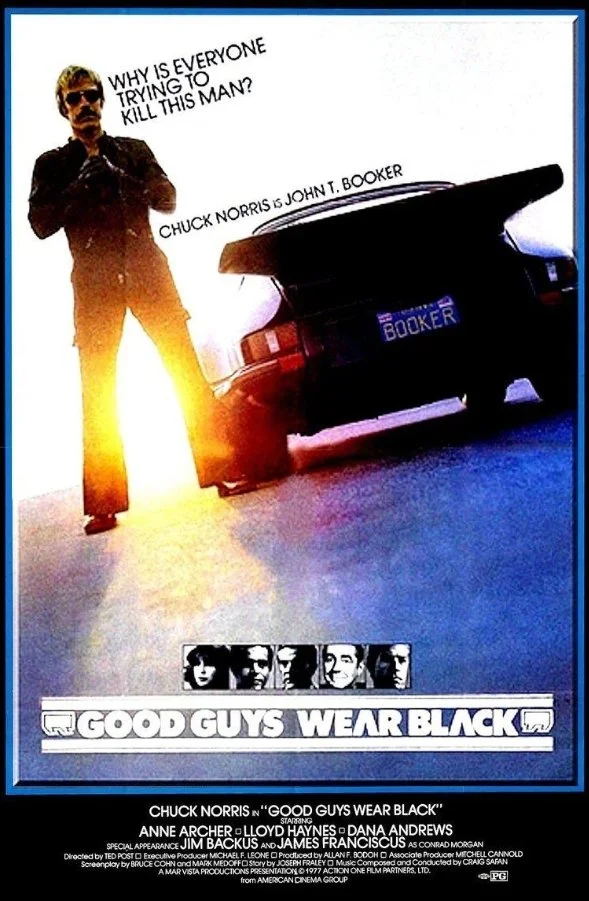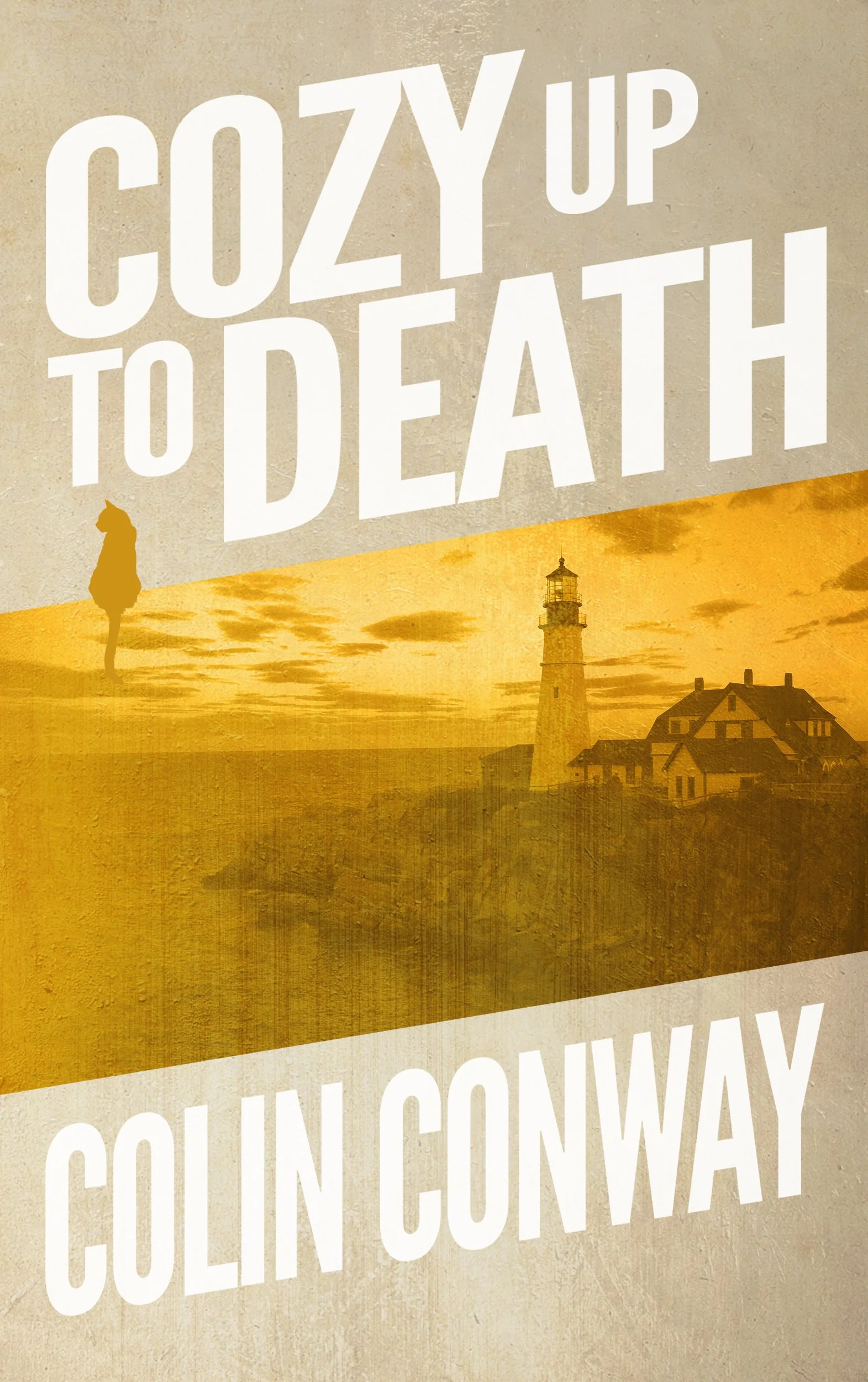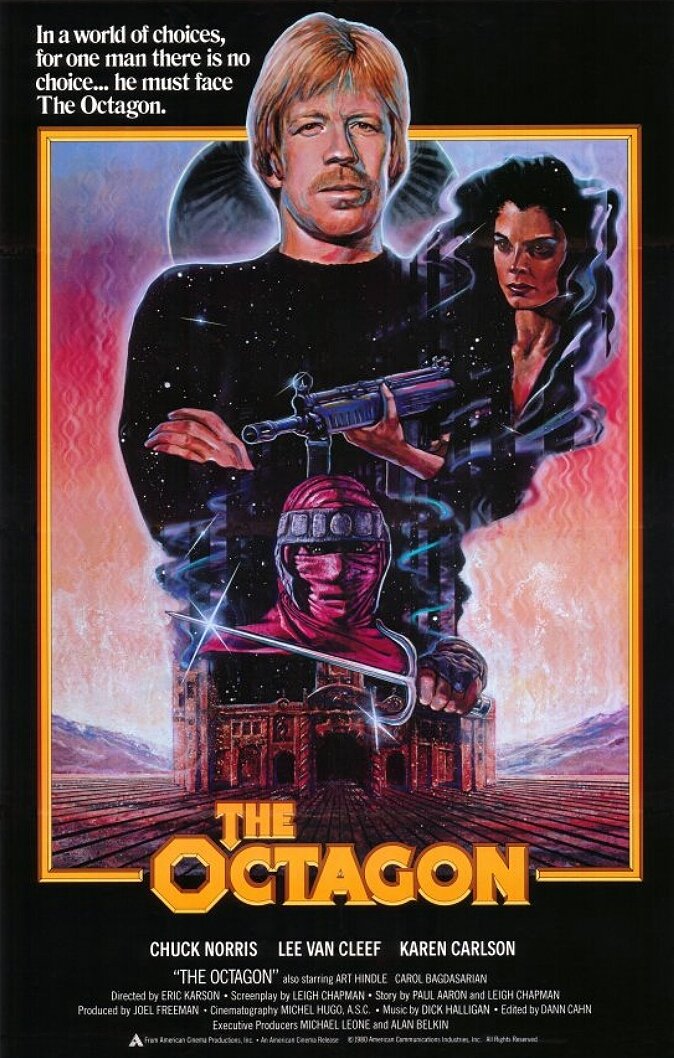Chuck Norris and the Art of Writing Brozies
“There are three things you can’t do in cozy mysteries,” a well-known author once told me. “You can’t swear, you can’t have sexy stuff, and you can’t show violence on the page.”
I listened to her closely as I wanted to learn everything I could about the cozy mystery genre. My own writing tended toward grittier crime fiction which limited my mother and mother-in-law from sharing my books with their church friends. I thought the cozy genre might be the solution to that dilemma.
“However,” the well-known author continued, “if you’re going to break any of the rules, you can push the swearing and get away with a little sexy stuff, but you can never break the one about violence. No one shows fighting and bloodshed on the page. It’s just not done.”
I’m known around my family for not following directions well. I want to think it’s because I’m goal-oriented, but my daughters claim it’s because I’m stubborn. My girlfriend lays the blame squarely on my gender.
Whatever the reason, I knew I’d found my calling when I heard that no one showed violence on the pages of a cozy mystery.
When I was a kid, my father took my brother and me to R-rated movies. Not the films with foul language nor the movies that showed scantily clad women; instead, we saw Chuck Norris flicks. My father’s reasoning was something akin to violence on the screen was okay, but nudity and bad words led to some sort of moral corruption. There is no more All-American sentiment than that.
The odd thing is I still watch movies with the attitude my father taught me. If a romantic bedroom scene comes along, I wish it would hurry past. If there’s a lot of foul language, I tend to notice it even though my salty tongue often leads to cringes from my girlfriend. Yet if a movie has lots of action, explosions, and fighting, I’ll buy a ticket or stream it the moment it’s released.
Before jumping into the cozy genre, I wrote two other series. One was a police procedural, and the other was a political-crime thriller. This seemed a natural choice as I had served as a police officer for a time.
My mom and mother-in-law enjoyed my writing but were reluctant to share it due to the swearing I included in the narrative. I never wrote about sex—that always occurred off the page—so that wasn’t an issue. The exciting thing was that neither mother complained about my novels’ violence.
It was the Chuck Norris effect but in prose. Everything was okay if the sex and swearing were kept off the page.
As I learned about cozy mysteries, I wondered if I could write one. It was hard not to know about those books since Agatha Christie defined the genre. I started researching the category to learn its tropes.
I already mentioned the three big No’s in the genre—no swearing, no sex, and no violence.
The murder or crime that sets up the story occurs off-page or (in the case of TV or movies) out of sight. The protagonist might discover a body, but how it got there is never shown.
The cozy mystery protagonist is an amateur sleuth with a hobby or employment related to that interest (reading/bookstore, knitting/craft store, baking/bakery, etc.). The ‘amateur’ modifier is essential. Otherwise, these stories would be police procedurals or private detective mysteries. Some bumbling may occur, but it’s not a requirement.
The protagonists are predominantly women, and there is the occasional discussion about whether the more popular leads are older or younger. Male protagonists in cozy mysteries are extremely rare, probably due to the scarcity of male authors in the genre.
Cozy mysteries typically occur in small towns, allowing the residents to know each other. The protagonist (our amateur sleuth) often has a social or romantic connection to a law enforcement individual, which helps her solve the crime. Our sleuth is usually likable, which gets the other townsfolk to open up easily and increases her chances of reaching a resolution.
The protagonist often has a pet. Usually, this is a cat, but it can be a dog or a parrot (or anything else an author can dream up). These animals occasionally help the amateur sleuth solve the crimes in cute and endearing ways.
The genre lends itself to “happily ever after” endings. Readers don’t want sad or overly dramatic finales. There are enough of those in the real world. Cozies are meant to be vehicles of escape.
There are too many additional tropes to identify here, but I tried to find them during my research. I wanted to know what I was getting into before developing my own cozy.
I wasn’t interested in creating a female protagonist who lived in a small town. At the time, I didn’t think I could do justice to a character like that, and I certainly didn’t believe I could write one who could carry a series. Besides, there were already plenty of female authors doing a bang-up job of it and a few men as well. I figured my best chance of standing out was to do something completely different.
That’s when I remembered sitting in a darkened theater with my dad as Chuck Norris punched a bad guy in the teeth.
My Cozy Up series features a former biker gang enforcer hiding in the witness protection program. He’s turned FBI informant against the Satan’s Dawgs, a fictional crew from Phoenix, Arizona.
Beauregard Smith is in his mid-thirties, 6’3, and 225 pounds. Tattoos cover his body. At the beginning of the first book, he has long, wild hair and a scraggly beard. As you can imagine, he’d be a hard man to hide in places like Cabot Cove.
I describe my series as Sons of Anarchy crashing into an episode of Murder, She Wrote. If you’ve never seen SoA, it’s a television series about a gang of awful people doing horrible things to other appalling people. It’s not a happy story. This is usually where I start to lose some cozy mystery traditionalists. Their first argument is that a cozy protagonist should not look like the lead guitarist in a heavy metal band.
Going against the grain was an opportunity to immediately set the tone for what lay ahead with my series. My books were not going to be your grandmother’s cozies. Would I offend some traditional readers? Sure, but those weren’t who I wanted to attract with the story of a former enforcer hiding in witness protection. My goal was to reach the friends of my mom and mother-in-law—readers who wanted mysteries without swearing and sexy stuff.
In my books, the U.S. Marshals made Beau cut his hair and shave that nasty beard. He’s still big and covered in tattoos, and people now confuse him with retired soldiers, SEALS, or other tough guys. He remains a tough character to hide in places frequented by the Jessica Fletcher types.
My series is based on the fish-out-of-water premise. No matter where Beauregard Smith goes, he stands out like a burp in church, whether that’s a resort town in California, a sparkly vampire film festival in Oregon (inspired by Twilight), or a high-rise senior center in Chicago. Whenever a crime occurs, Beau’s the new guy, so the cops and locals automatically point to him.
And why wouldn’t they? Our society is predicated upon fitting in. We pretend we are inclusive, but when someone new arrives in our neighborhood/school/workplace that doesn’t look like everyone else, we tend to eye them with suspicion.
In the first book, Cozy Up to Death, the U.S. Marshals assign Beau to work at The Red Herring, the only mystery bookstore in a small town in southeastern Maine. The problem is Beau hasn’t read a book since high school—a fact he takes pride in. When customers start arriving to ask for recommendations, Beau is at a loss. He doesn’t know his protagonist from a hole in the ground. Unfortunately, the previous owner of The Red Herring has gone missing. Now, everyone is pointing at Beau and wondering how the new stranger got possession of her bookstore and beloved cat.
Chuck Norris blended in wherever he went. Beauregard Smith could have learned some lessons from him.
Dropping a former biker gang enforcer into the world of cozy mysteries is problematic for a couple of reasons. The first is optics, while the second centers on his history.
In the thriller genre, a man of Beau Smith’s size might be named Reacher, or he could be found leading a SEAL team into enemy territory. In a police procedural, a man of this size could be portrayed as a tough, no-nonsense cop—the type of guy who gets confessions with his fists.
Conversely, Beau Smith’s size is often reserved for villains or at least their henchmen in the cozy genre. He’s an anomaly in this world of cupcakes, knitting, and scrapbooking. He is ready for action, unafraid of intimidation, and built for violence.
Beau views the world like I imagine a Great Dane would. He’s unafraid of the other dogs but doesn’t realize it’s because of his size. He thinks it’s because he’s tougher than they are. Everyone else recognizes the guy is a big son of a gun. As he moves through the series, Beau literally and metaphorically tries to fit into the cozy world.
The second problem that arises from dropping a former enforcer into this genre is how to handle the back story. Beauregard Smith did many various bad things for the Satan’s Dawgs. Therefore, I had to give the readers a reason to root for him.
The FBI motivated Beau to turn against his crew by leveraging the one thing he loved—his grandmother. A man’s love for his Nana might convince a couple of readers, but it won’t persuade the majority to come along for the ride. They had to get something more tangible.
That was the motivation behind his redemptive arc. We can’t excuse what anyone did yesterday, but we can look at what they are doing today.
Beauregard Smith wants to be a better man. The strive-to-be-better theme plays through much of my writing, but it is most predominant in the Cozy Up series. Beau is on a quest to grow into someone different. Someone he can be proud of when he looks in the mirror. Someone his grandmother could be proud of. At times, this journey is fun. Occasionally, it is hard. But it is now always on Beau’s mind.
Things heat up when he meets the lovely Daphne Winterbourne. Now, he not only wants to be better for himself, but he also wants to be better because there is a woman out there he doesn’t feel worthy of yet.
Chuck Norris didn’t have this problem. He was always the good guy.
Tweaking the cozy genre comes with risks. Some readers quickly point out that my series is “not a cozy.” The first thing they fall back on when making this argument is that violence appears on the page. I freely admit that. All my cozies have some violence—some more than others.
In Cozy Up to Death, Beau is attacked by a couple of Satan’s Dawgs in the bookstore, and a donnybrook ensues. He fights the two men off and ends up beating one about the head and shoulders with a hardback book.
If the three rails of cozy mysteries (no swearing, no sex, no violence) were a hard and fast rule, I would agree with the traditionalists—violence could never be on the page. Yet, when some authors are allowed to push/break the first two rails, an argument must be made that someone can push/break the third.
For my fish-out-of-water story to continue as a series, Beau Smith must constantly have his secret identity exposed. It’s a trope in my novels, and unfortunately, it meant that the love interest he had in the first novel, Daphne Winterbourne, was left behind.
I received blowback from cozy traditionalists for this choice because it did not satisfy the genre requirement of a happily-ever-after ending. Beau spends the subsequent novels pining away for Daphne and continues his pursuit to become better. Still, those readers felt disappointed that he didn’t “get the girl” at the end of book one.
But that felt true to the story and the series. Beau had to leave the small town. He would have put Daphne’s life in danger if he had stayed. The Satan’s Dawgs had shown up there once. They would have eventually returned a second time to find him and hurt Daphne as a result.
The overwhelming reaction to tweaking the cozy genre has been positive, though. One male reader labeled my Cozy Up books “brozies.” I loved the idea that there might be cozy mysteries geared toward men—the way Chuck Norris movies were unabashedly guy flicks.
My mom never saw a Chuck film with ‘the boys.’ I imagine it was that way in many households. If a “brozy” could bring a male reader into the cozy genre, I thought that would be super cool.
However, my readers are by far women, and they seem to love Beau. They have adopted a protective, almost nurturing quality when asking about him. The questions are always whether he will ever get to be safe and if he will ever see Daphne again.
In my heart, I know the two of them will reunite and have adventures together. How can I be so sure?
Because Chuck Norris always got the girl before the movie ended.



